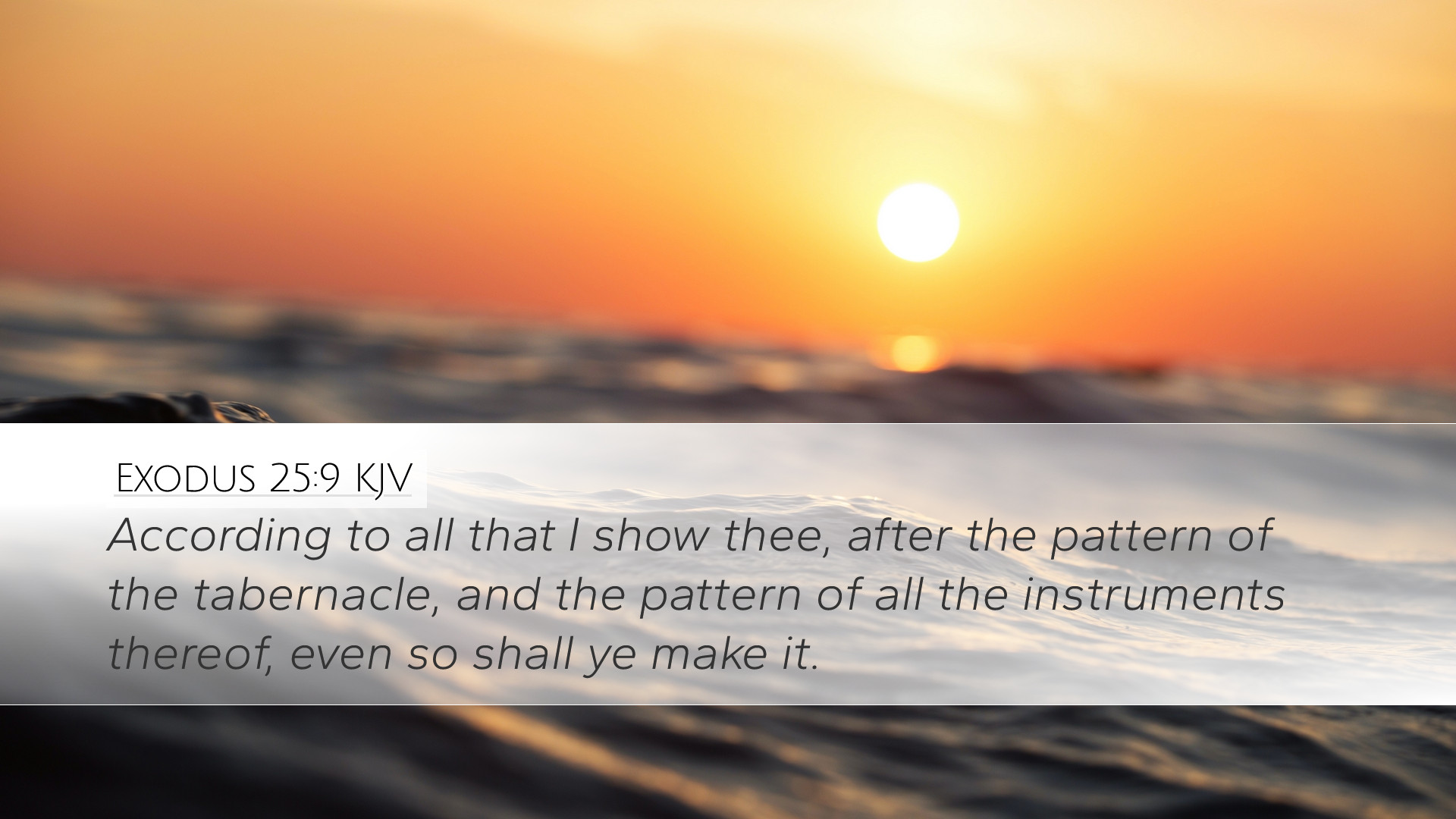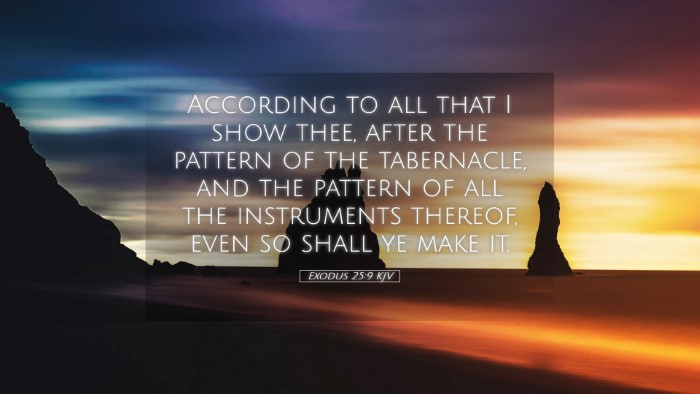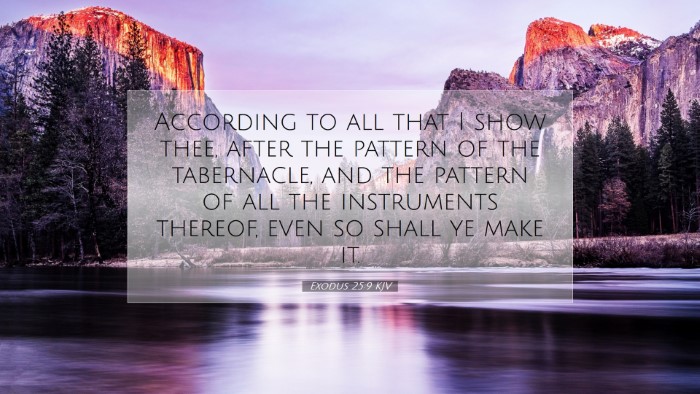Commentary on Exodus 25:9
Verse: "According to all that I show you, after the pattern of the tabernacle, and the pattern of all the instruments thereof, even so shall ye make it."
This verse finds itself within a critical section of the Book of Exodus, where God provides Moses with detailed instructions regarding the construction of the Tabernacle, which was to serve as God’s dwelling place among His people. The command emphasizes adherence to divine instruction in worship and design.
Contextual Background
The Israelites, having been delivered from Egypt, are encamped at the foot of Mount Sinai. The giving of these instructions occurs following God's revelation of Himself and His covenant to the people. The Tabernacle represents not only physical space but serves as a theological symbol of God's presence and holiness among His people.
The Divine Directive
1. Specificity of God's Instructions: The phrase “according to all that I show you” underscores the meticulous nature of the divine directive. God provides Moses with explicit patterns and designs which must be followed without deviation. This notion is central to the theological understanding that worship should be conducted in accordance with God’s specifications.
2. The Pattern of the Tabernacle: The Tabernacle's construction reflects heavenly realities. As the author of Hebrews states, it serves as a shadow of the true heavenly sanctuary (Hebrews 8:5). Thus, the focus on the pattern showcases God’s intention to provide a glimpse into His divine order and the ultimate plan of redemption.
Spiritual Significance
- God’s Desire for Relationship: The Tabernacle symbolizes God's desire to dwell with humanity. This theme is echoed throughout Scripture, climaxing in the incarnation of Christ, where God becomes Immanuel, "God with us.”
- Holiness of Worship: The strict adherence to the pattern signifies the holiness required in worship. It teaches that approaching God necessitates reverence and meticulousness in following His commands. Worship is not merely a human endeavor but a response to God’s revelation.
- Community's Role in Worship: The communal aspect of the construction—where artisans are chosen to execute God’s design—indicates that worship is both individual and collective. It calls for individuals to contribute their gifts to the glorification of God and the edification of the community.
Commentary Insights
Matthew Henry
Henry notes that the stipulations given concerning the Tabernacle reveal the holiness of God and illustrate the significance of careful worship. He emphasizes that the attention to detail in the instructions mirrors God's transcendent nature and invites believers into a sacred relationship through structured worship.
Albert Barnes
Barnes regards this command as a poignant reminder of the necessity for divine guidance in the acts of worship. He posits that failure to adhere to God’s pattern can result in dire consequences, as seen in the case of Nadab and Abihu who offered unauthorized fire before the Lord (Leviticus 10:1-2). The verse serves as both encouragement and warning to maintain fidelity to God’s will.
Adam Clarke
Clarke emphasizes the importance of the “pattern” used in the construction of the Tabernacle, drawing parallels between its structure and the human heart. He suggests that just as the Tabernacle was assembled according to divine specifications, so too must the heart of the believer be constructed according to God’s principles for it to be a suitable dwelling place for God’s presence.
Conclusion
Exodus 25:9 serves as a significant verse that encapsulates the essence of divine instruction, worship, and the relationship between God and His people. For past and present believers, the Tabernacle remains a powerful symbol of God's desire to dwell among us, reminding us of the careful considerations required in our approach to worship. It calls leaders, students, and scholars alike to study the depth of God's specifications, reflecting on how they each apply to contemporary expressions of faith.


